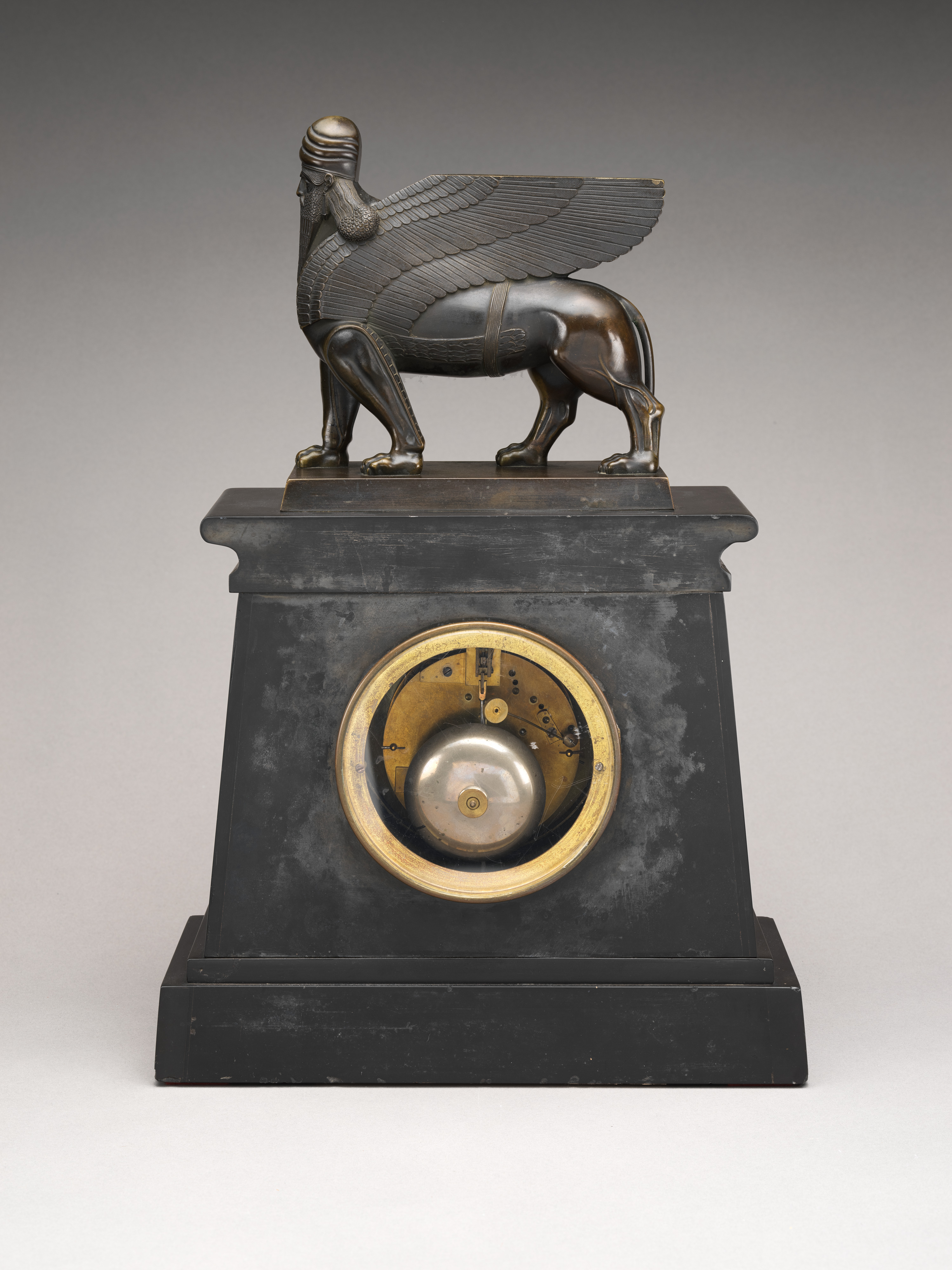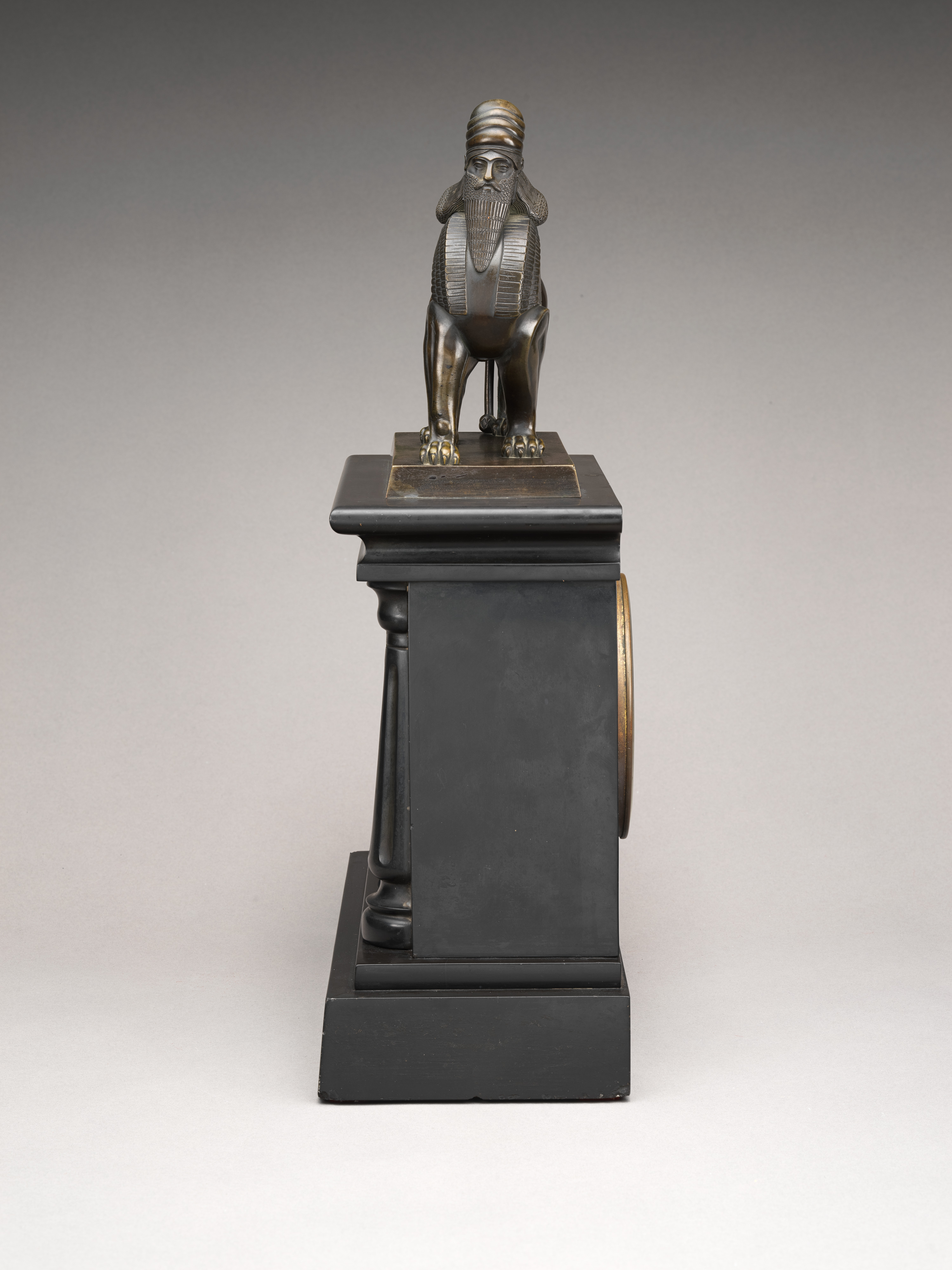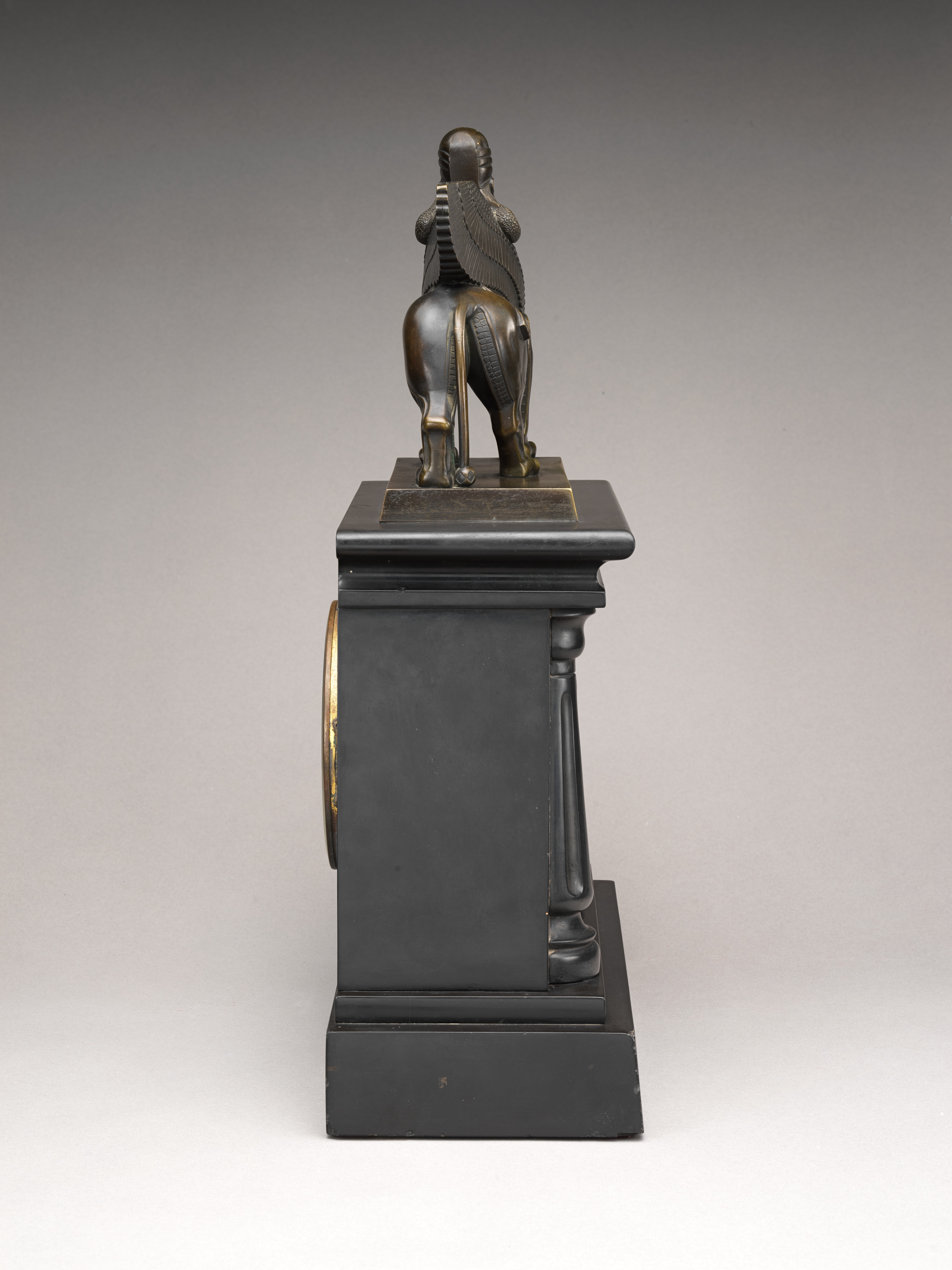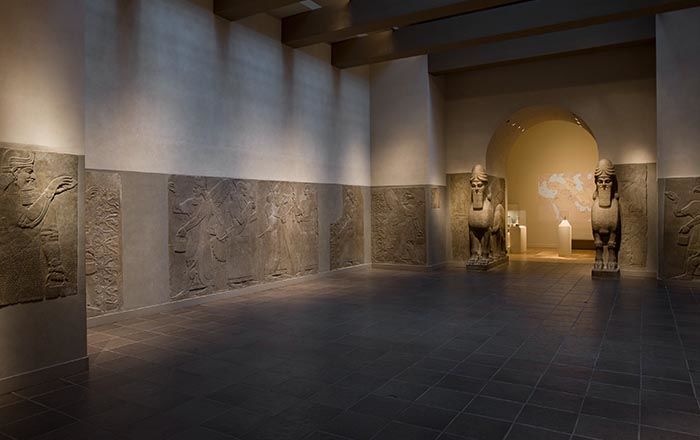Clock with human-headed winged lion
Not on view
Following the excavation of Assyrian palaces in the mid-nineteenth century, ancient Mesopotamian imagery began to be used in European decorative arts, including jewelry and ceramics. Publicity in the form of news coverage and popular books around the excavations, removal of many sculptures from sites in northern Iraq to England and France, and public spectacles such as the reconstructed ‘Nineveh Court’ in the Crystal Palace at Sydenham, London, fostered a fascination with Assyria and Assyrian art among the Victorian public.
The lion standing on top of the clock is loosely based on the pairs of guardian figures, called lamassu, that stood at important gateways in Assyrian palaces. The originals stood several meters high, and one side of each would have been built into the palace wall. Similar bronze figures were also made as separate ornaments. An unusual feature of this example is that what are normally bulls’ horns on the side of the headdress (in ancient Mesopotamia these were a common indicator of divinity), have in this case been joined at the front to form horizontal bands: the maker may have interpreted the headdress as a sort of turban.
This image cannot be enlarged, viewed at full screen, or downloaded.
This artwork is meant to be viewed from right to left. Scroll left to view more.





